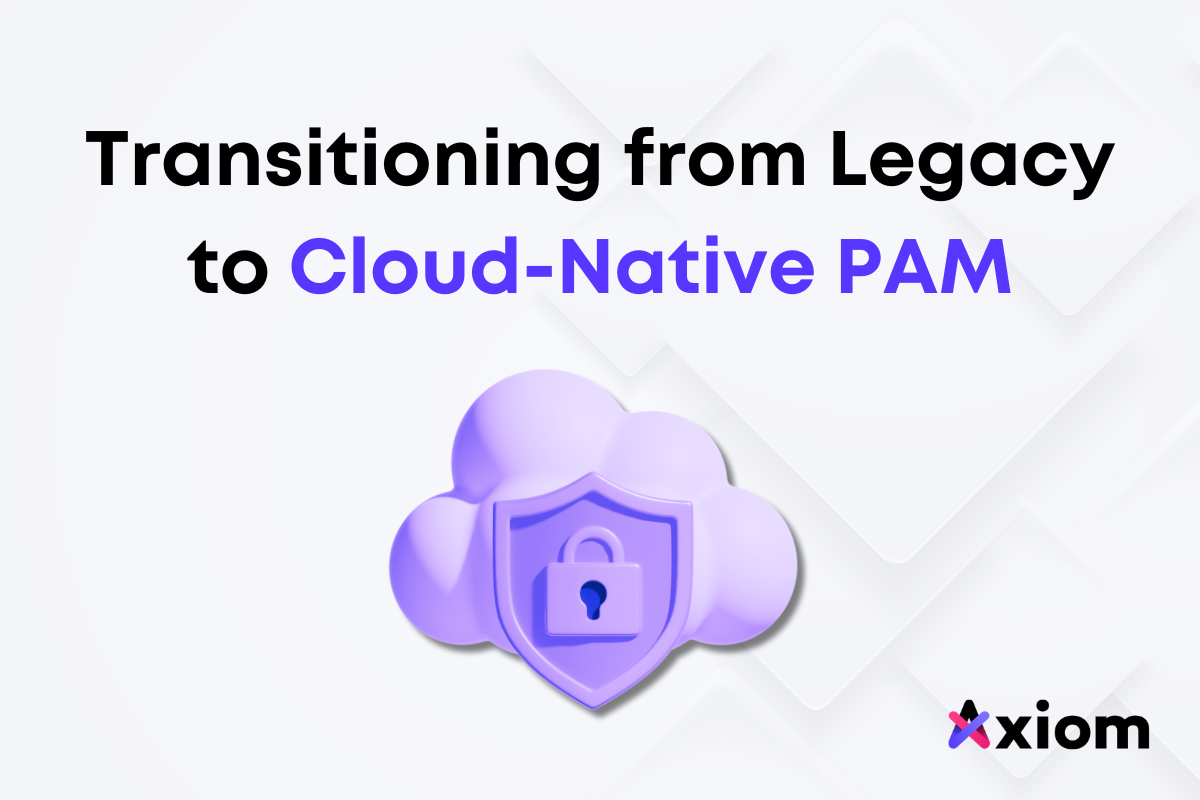Introduction
In the rapidly evolving landscape of Cloud security, managing privileged access is crucial for protecting sensitive data and systems. As Cloud becomes increasingly dominant, traditional legacy approaches to Privileged Access Management (PAM) are undergoing a significant transformation. This blog post explores the shift from legacy PAM systems, which focus on the network perimeter, to modern, cloud-native PAM systems that prioritize the identity perimeter.
The Evolution of PAM
Legacy PAM: An Overview
Network Perimeter Focus: Legacy PAM systems were developed with a strong emphasis on securing the network perimeter and controlling access within a fixed, on-premises network environment.
Challenges in the Cloud Era: These systems face limitations in scalability, integration with cloud services, and a lack of agility, which are essential in today’s dynamic IT landscapes.
The Shift to Cloud-Native PAM
Emphasis on Identity Perimeter: Modern PAM solutions shift the focus from network to identity perimeter, aligning with the decentralized nature of cloud environments. This approach prioritizes user identity over network location in granting and managing access.
Advantages for Cloud Environments: This shift enables enhanced security in distributed environments, offering scalability, integration ease, and automated control over access rights in complex cloud ecosystems.
Key Differences Between Legacy and Modern PAM
Focus Shift: Network to Identity Perimeter
In cloud-native environments, where users access systems from various locations, focusing on identity rather than network location is essential for robust security. This approach aligns with the agility of a modern workforce, enabling secure access regardless of geographical boundaries.
- Legacy PAM: Originally designed to secure access within a well-defined network perimeter, legacy PAM systems are less effective in today’s dispersed IT environments. They often struggle to manage remote access and cloud-based resources efficiently.
- Modern PAM: Embraces the decentralized nature of cloud computing by focusing on the identity perimeter. This approach prioritizes the verification of user identities and their access rights, regardless of their physical location, ensuring more robust security in distributed and remote work scenarios.
Scalability:
Scalability is crucial in cloud-native environments to accommodate fluctuating demands without compromising security or performance. It ensures that the PAM system can grow with the company, supporting an agile and expanding workforce.
- Legacy PAM: Traditional systems may face scalability challenges, especially when adapting to sudden changes in the number of users or the complexity of network environments.
- Modern PAM: Designed with cloud scalability in mind, these solutions can effortlessly adjust to the fluctuating demands of cloud-based operations, ensuring consistent management and security regardless of the scale.
Cloud Integration:
Effective cloud integration is essential for streamlined management and security across diverse cloud services, reflecting the interconnected nature of modern business operations and the need for cohesive security strategies.
- Legacy PAM: Often requires complex workarounds to integrate with cloud services, leading to potential security vulnerabilities and management inefficiencies.
- Modern PAM: Offers native integration capabilities with a wide range of cloud platforms and SaaS applications, facilitating a seamless and secure management experience across various cloud environments.
Automation and Efficiency:
Automation in PAM reduces manual workload and errors, crucial for managing complex cloud environments and supporting fast-paced, agile business processes.
- Legacy PAM: Manual processes are common, which can be time-consuming and prone to human error, especially in complex configurations.
- Modern PAM: Leverages automation for provisioning, de-provisioning, and managing access rights, significantly reducing manual efforts and the potential for error, thereby enhancing operational efficiency.
User Experience:
A superior user experience in PAM systems enhances adoption and operational efficiency, which is particularly important for businesses embracing fast-paced innovation and change.
- Legacy PAM: User interfaces and workflows in legacy systems can be clunky and less intuitive, potentially hindering user adoption and operational efficiency.
- Modern PAM: Prioritizes user experience with intuitive interfaces and streamlined processes, facilitating easier adoption and more efficient management of access rights.
Conclusion
The transition from network-focused legacy PAM to identity-centric, cloud-native PAM is a critical step for modern businesses. This shift not only enhances security in cloud-based environments but also ensures operational agility and compliance. Choosing the right cloud-native PAM solution positions organizations to effectively manage their identity security needs in the evolving digital landscape.






